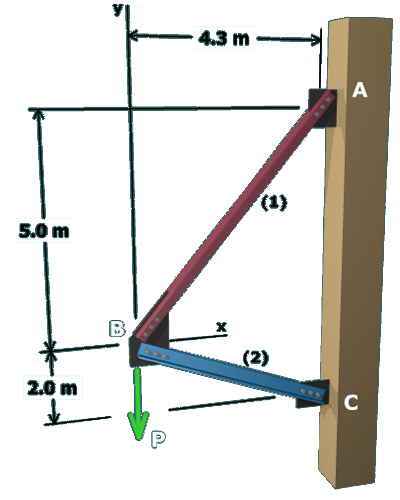A trial-and-error approach can be used to determine the maximum allowable load :
6. If , then the original assumption has been proved incorrect. In truth, member (2) controls the load capacity of the structure. Consequently, our earlier calculations must be corrected. This can be done in at least two ways:
a. Set and solve the equilbrium equations again for and .
or alternatively,
b. Compute the ratio and then multiply the values of , , and by this ratio.
